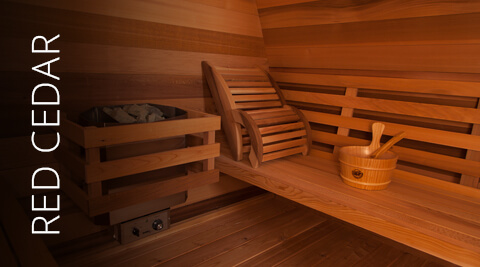Some Known Details About Traditional Sauna
Some Known Details About Traditional Sauna
Blog Article
The Basic Principles Of Traditional Sauna
Table of ContentsTraditional Sauna Things To Know Before You BuyAbout Traditional SaunaAn Unbiased View of Traditional SaunaThe Ultimate Guide To Traditional Sauna
A lot of the weight shed in a sauna is water loss and is re-gained upon rehydrating. However, undoubtedly sauna can be a crucial component of a healthy weight management program. To check out the distinctions between traditional and IR saunas, I will divide these right into verifiable, theoretical, and fabricated differences.Thus, the most popular factor in the saunawhich goes to the ceiling directly over the sauna heateris generally between 185 and 190 F. Traditional Sauna. Claims that a conventional sauna surpasses 200 F is merely not true and not appropriate for electric saunas marketed in the United States. The temperature level for a far-infrared sauna is normally set between 120 and 140 F; however, unlike the traditional sauna, the objective in and IR space is not to achieve a high temperature
As a result of this, the temperature level distinction is almost unimportant, considering that profuse sweating results in both sauna types, yet the technique of heating up the body is different. In an IR sauna the bather will certainly really feel warm and will certainly sweat profusely, but at much reduced temperature levels. Thus, if the goal is to invest longer amount of times in the sauna, the IR sauna is an excellent option.

Traditional Sauna Fundamentals Explained
When the heat is attained, the components cycle on and off to keep the high temperature. The majority of standard sauna users take pleasure in putting water over the rocks to create heavy steam to increase sauna moisture levels. The advantages of putting water over the rocks consist of: making the area much more comfy, dampening the nasal flows, and permitting the usage of aromatherapy by mixing important oils with the water.
In a far-infrared sauna, the warmth waves penetrate the body to effectively heat up the body and increase the body core temperature level. To attain this raised temperature, Far-infrared emitters create infrared power which is close to the very same wavelength as that which the body normally emitsoften referred to as the "Crucial Variety" of 7 to 14 microns), so the energy is well received by the body.
When the power enters the body, it causes the body temperature level to raise and inevitably leads to sweat. In an infrared sauna it is essential for the emitters/heaters to remain on nearly regularly. Because there is no mass of rocks to retain warm, the sauna will certainly cool if the emitters turned off.
As mentioned over, the sauna bather in an infrared room intends to position himself why not try here in front of operating emitters to obtain maximum advantage from the warm. The heating time for both areas can be extremely different, depending upon just how the rooms are made use of. For a typical sauna, a bather should allow 30-40 mins for the space to achieve a wanted temperature level and to correctly pre-heat the rocks.
Everything about Traditional Sauna
A well built sauna will commonly attain a temperature of 150-160 F in regarding 30-40 mins. For hotter temperature levels, the area may require to warmth for a longer duration.
To some, 15 mins was "lost" while the infrared energy heated the wood panels as opposed to heating up a body, while others find a pre-heated room to be more comfortable and believe an elevated beginning temperature level is essential to start sweating. The size of recommended use for each room is about the very same (10-15 minutes per session); however, as a result of the reduced air temperature levels and the capacity to really feel the effects of infrared heat much faster than a traditional sauna, it is visit our website not unusual for a person to spend an overall of 20-30 minutes in an infrared sauna.
Typical saunas tend to be bigger (therefore use even more electrical energy) than infrared saunas, although conventional saunas are certainly available in one and two individual dimensions too. For a two-person conventional sauna, 5x6 or 5x7 dimension is most prominent. The top bench can conveniently seat 2 or 3 people and is also enough time to rest during the sauna session.


The typical price per kWH of power in the U.S. is approximately $0.11, so a 4.5 kW heating system will set you back about $.50 to compete one hour, if the heater runs constantly for one hour. Normally a sauna heating unit will certainly run for 75% of the initial hour and 50% of subsequent hours on given that the aspects cycle once the established temperature is attained.
Not known Details About Traditional Sauna
A 2 individual far-infrared area is typically literally smaller sized than a conventional sauna, usually concerning 4' x 4' or smaller. The IR heating unit is usually 1.5-1.7 kW utilizing a 120 volt 15 amp plug-in service. Because the space can be utilized faster than a sauna space, we will presume the space is utilized for to of an hour consisting of warm up time.
There is a hardly ever discussed distinction in the social experience in between the 2 spaces. While our society has lost some of the social benefit of the standard sauna experience, it can be really socially rewarding. From family members time in the sauna, special info to heart-felt discussions with loved ones, to sauna partiesthe typical sauna experience can result in intimate mingling.
Most higher end infrared spaces include tinted light treatment, sound systems and full-glass fronts.
Report this page